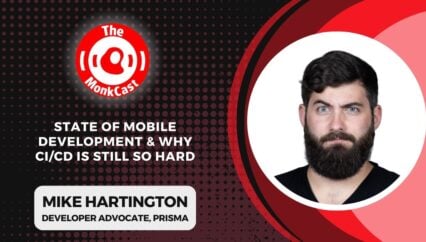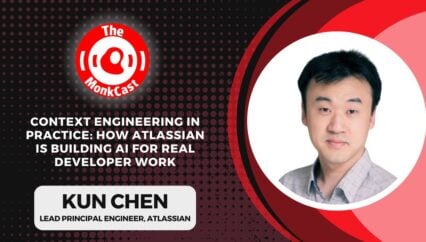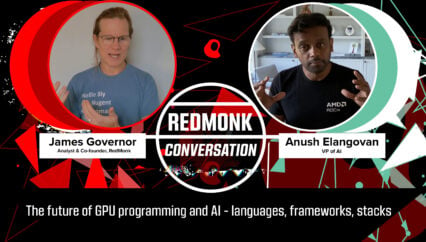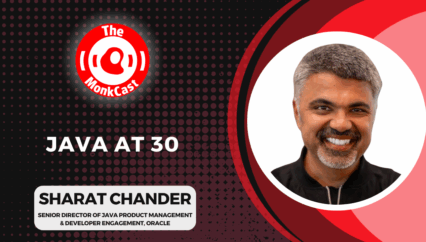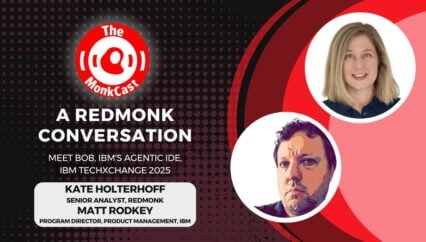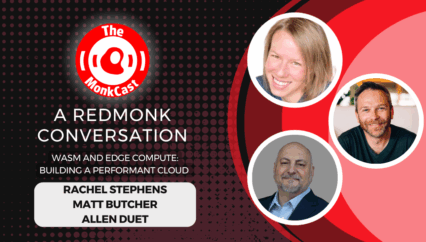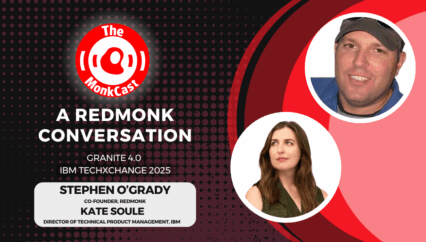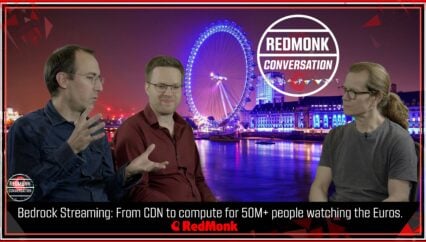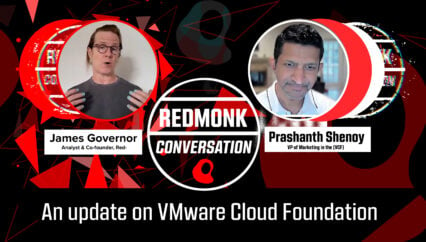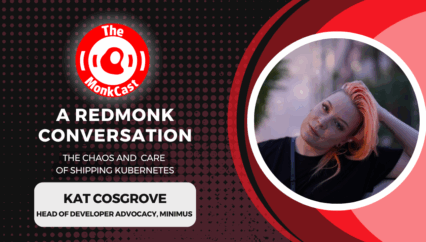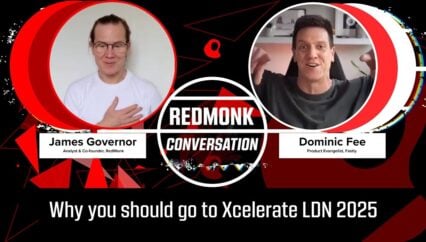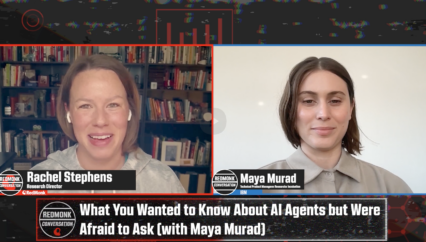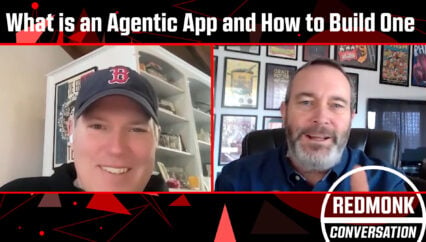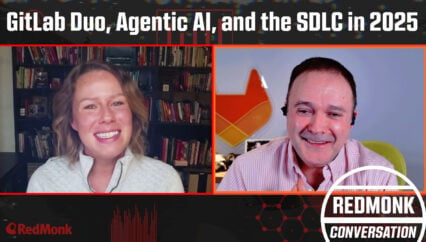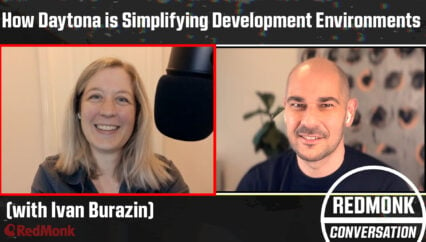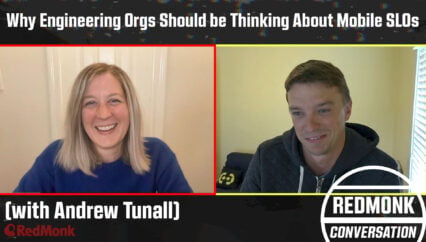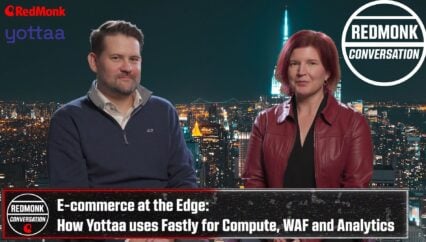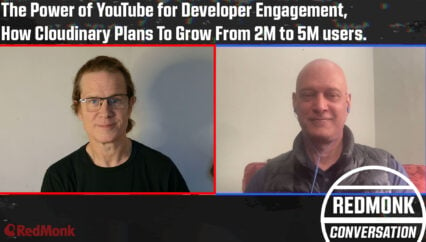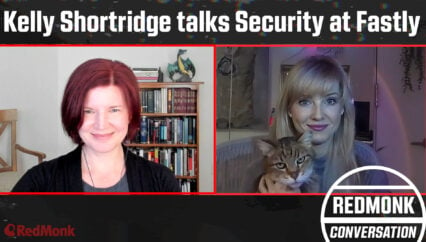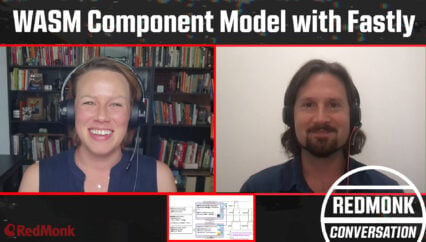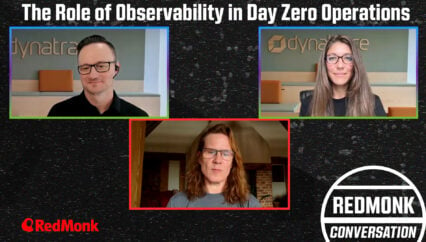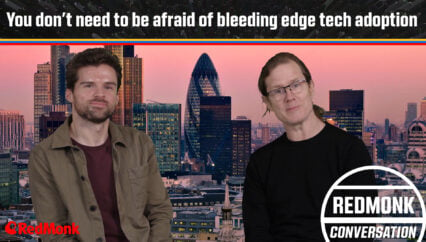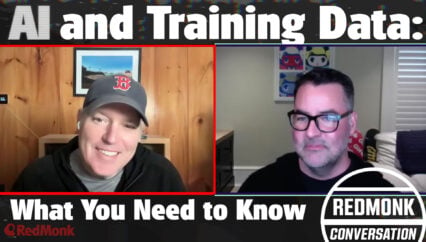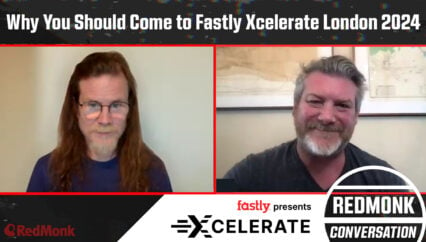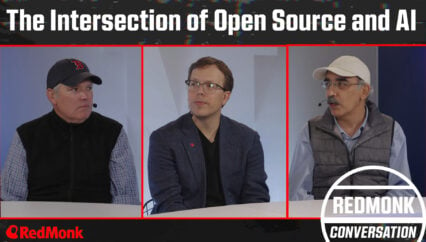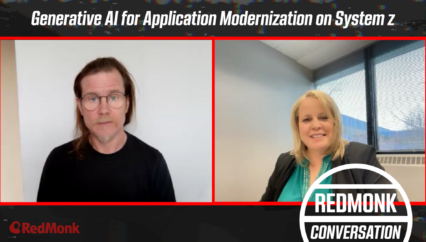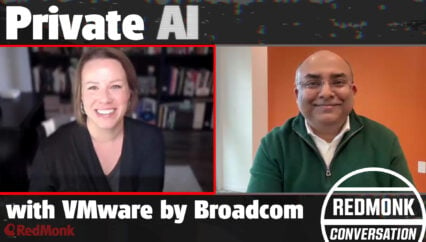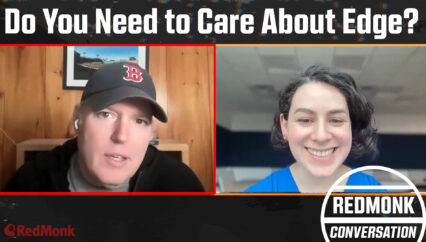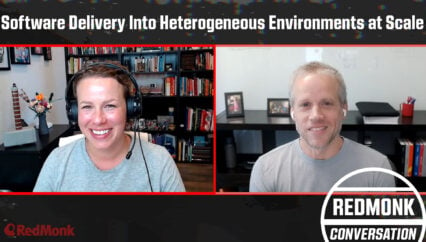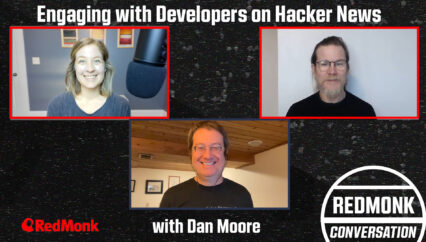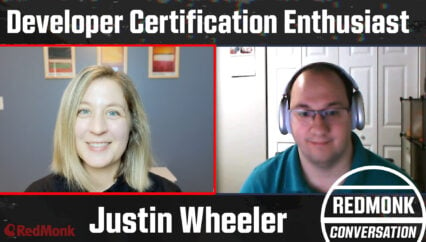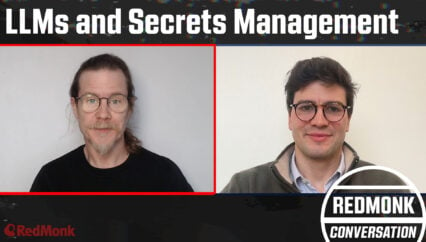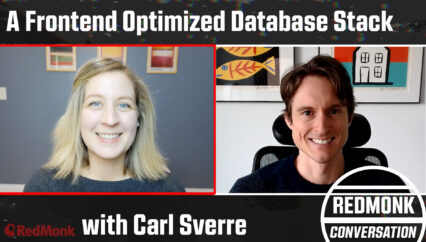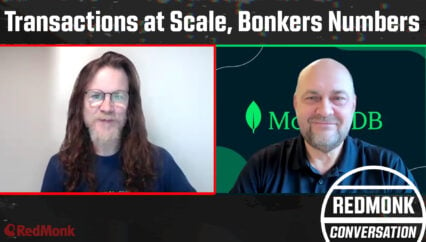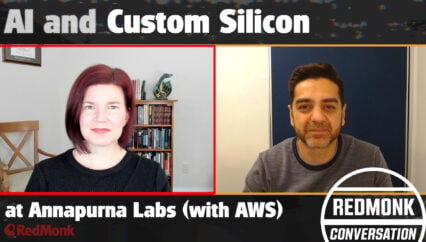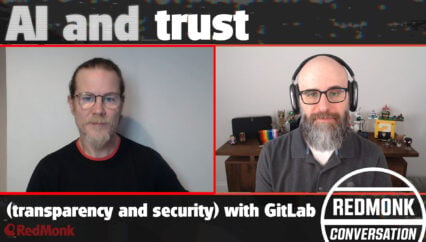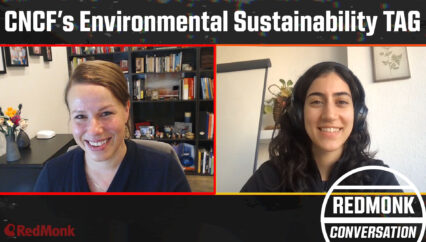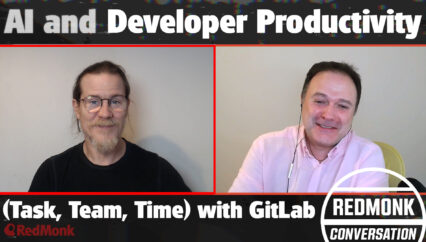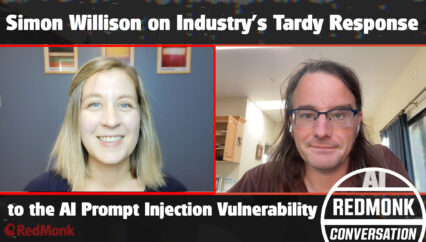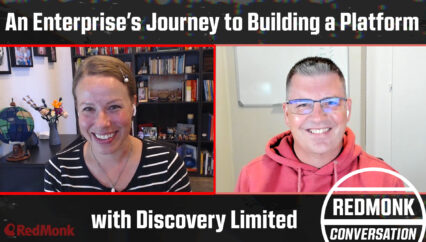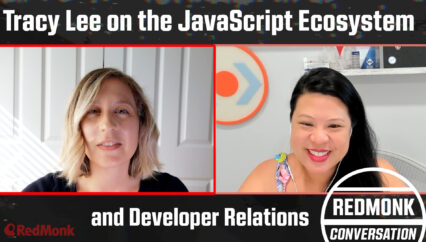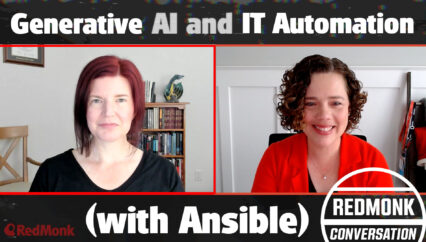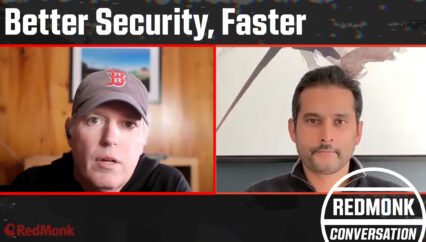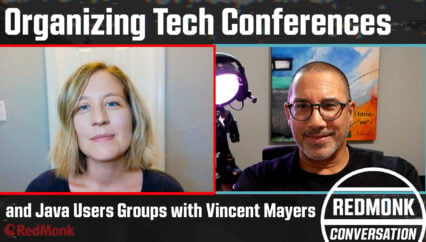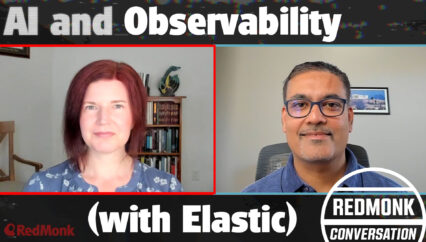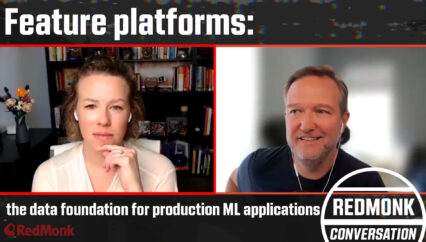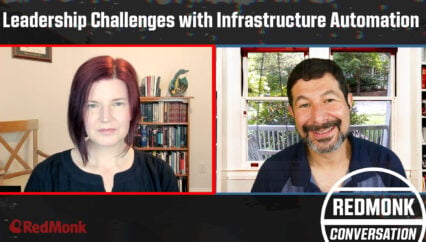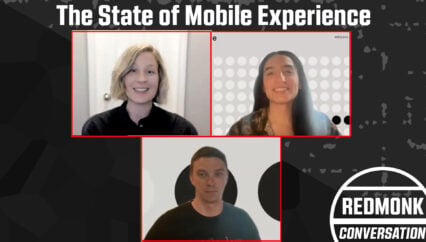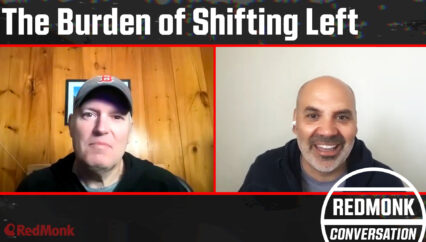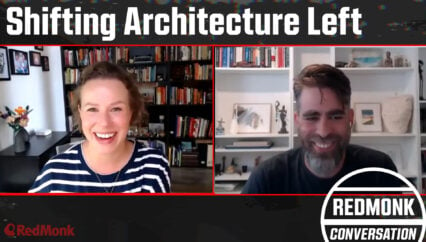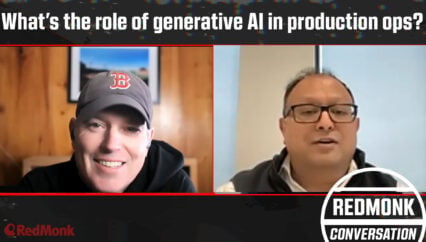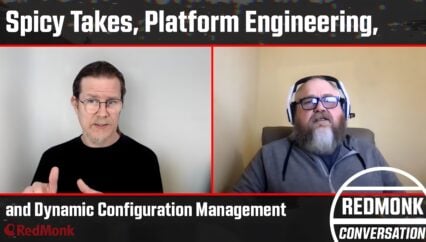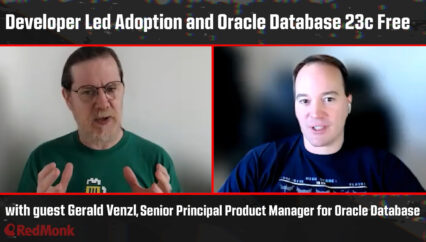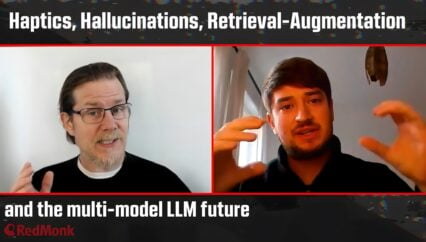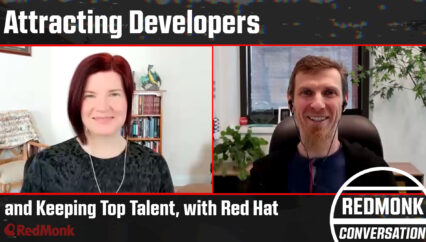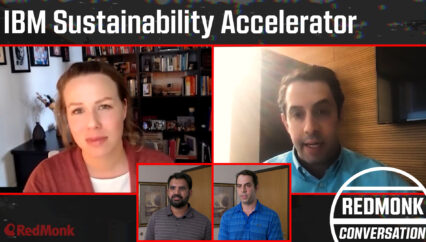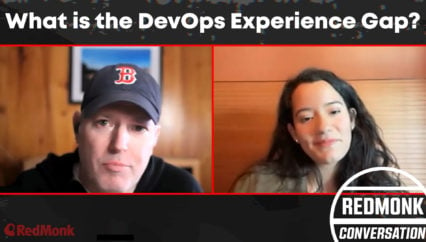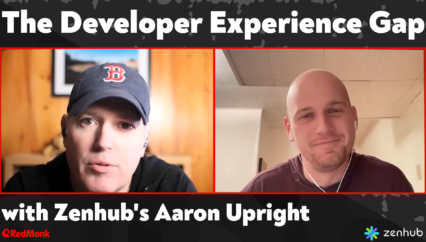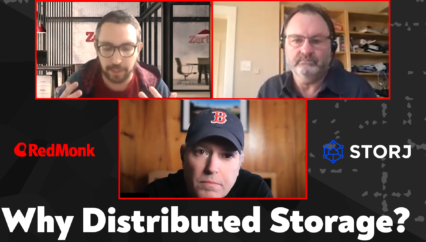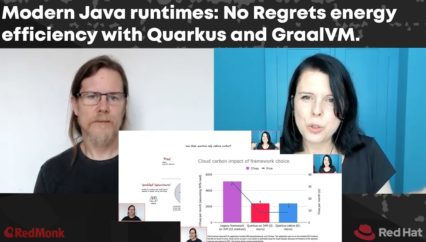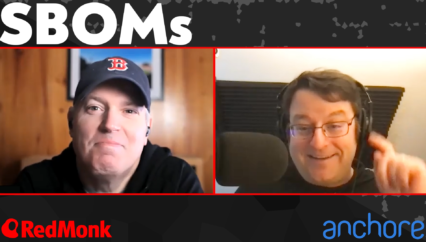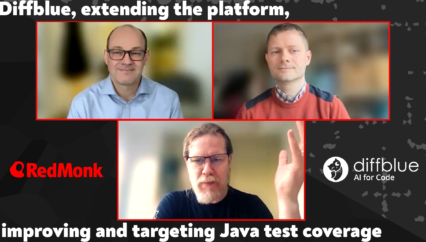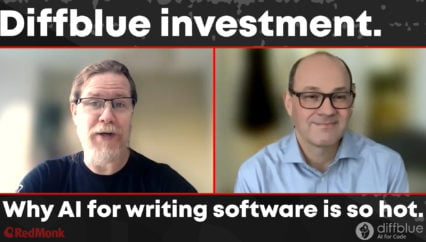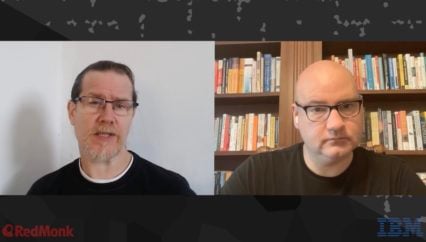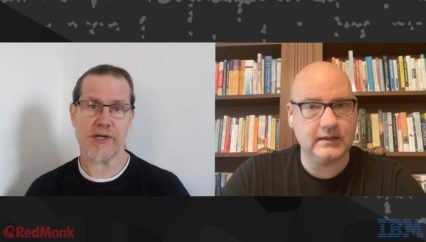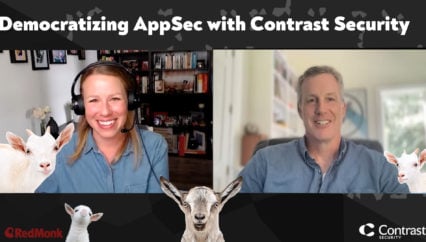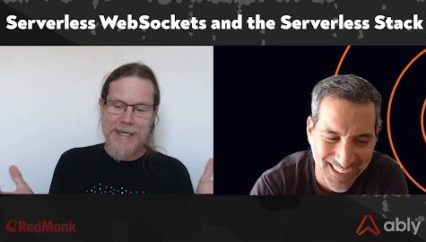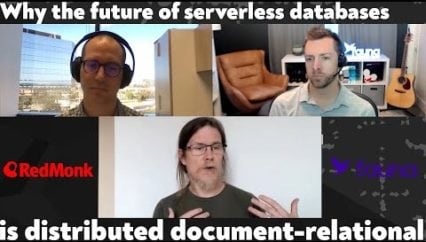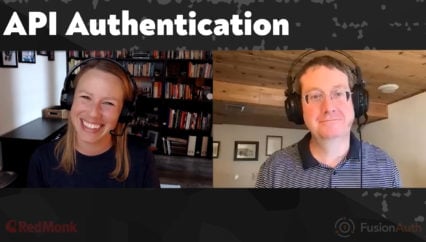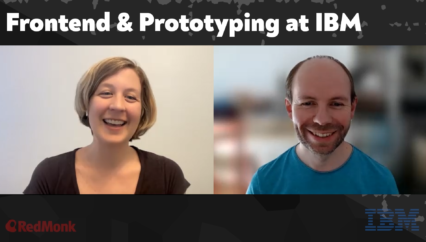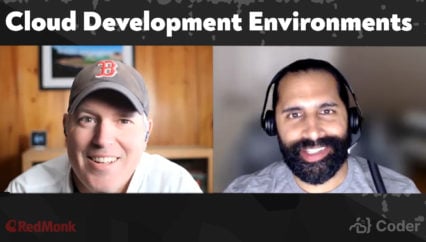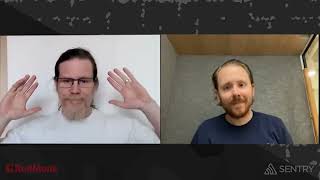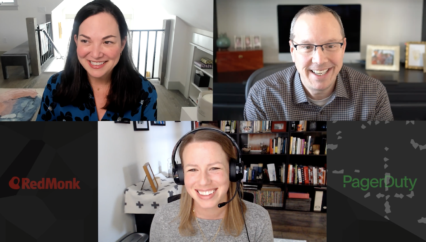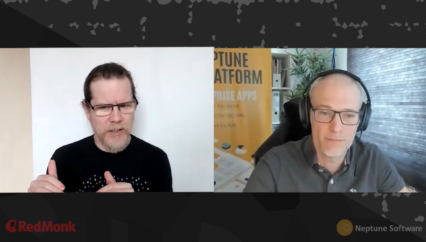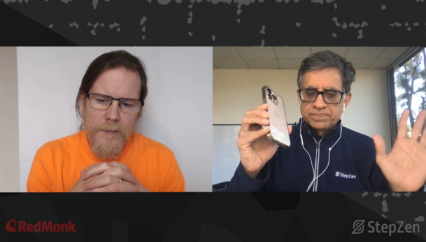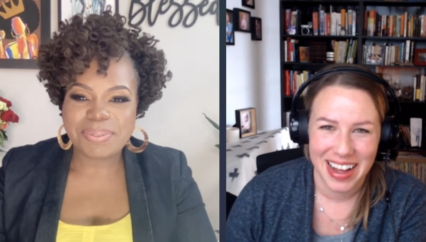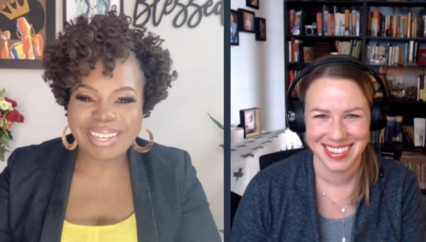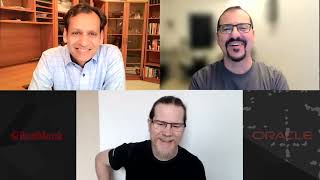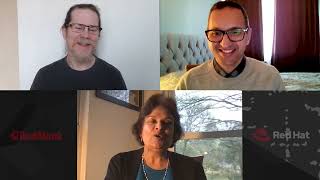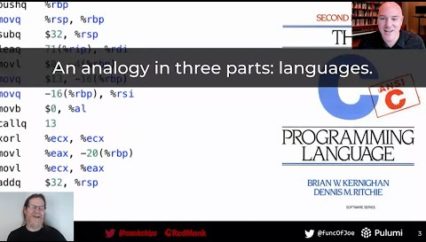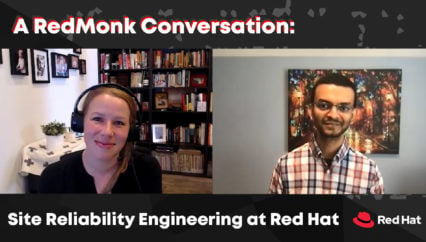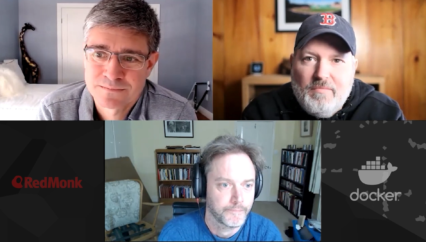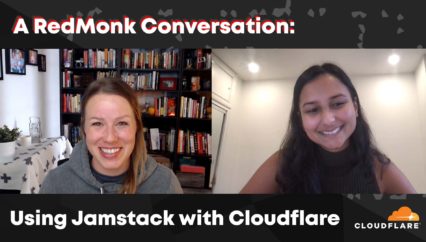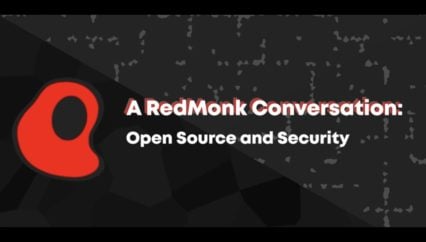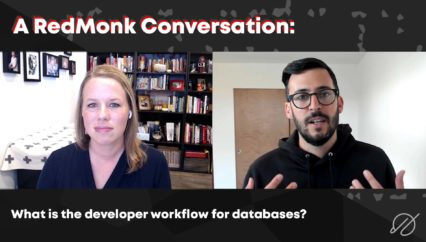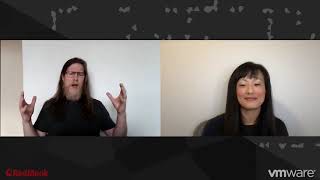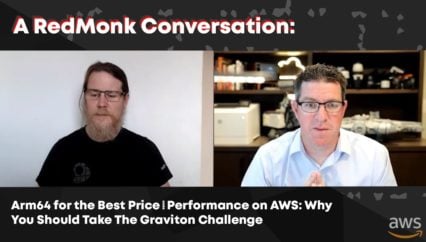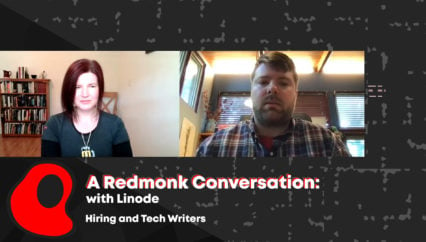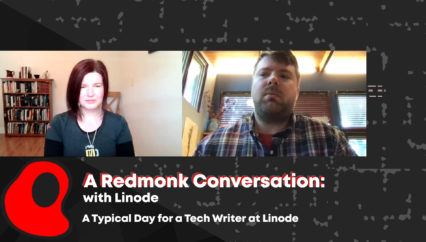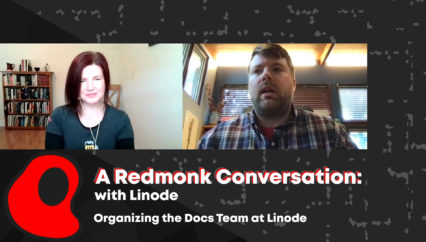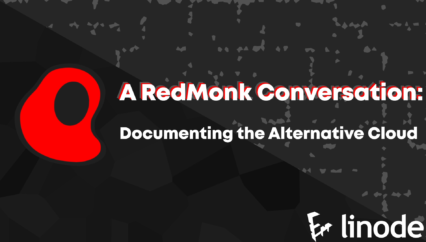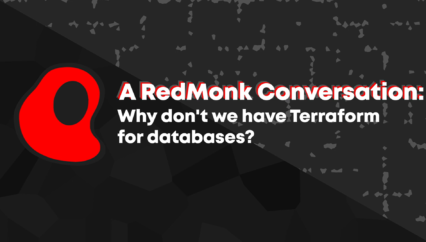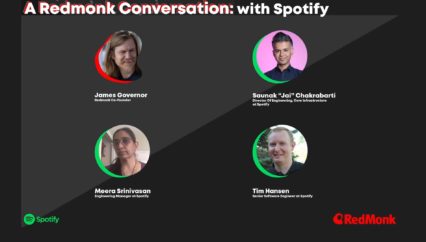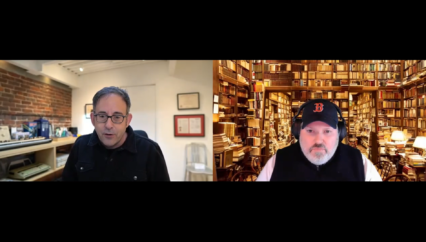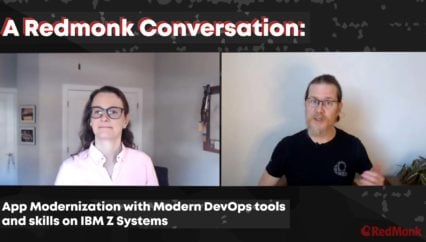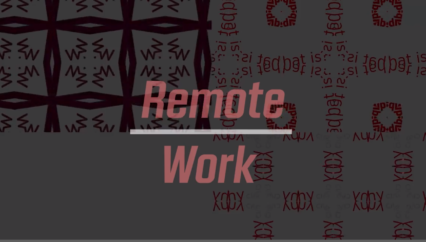In this conversation, James Governor of RedMonk and Simon Wistow, co-founder of Fastly, discuss the challenges and future of open source in the tech industry. James highlights a crisis in open source due to a trend of companies switching to source-available licenses, which he refers to as a “rug pull.” This shift, often driven by investor pressure, threatens the sustainability of open source projects. Simon, who has a long history with open source, explains how Fastly supports various open source projects, emphasizing the importance of sustainability and non-reliance on short-term funding. He notes that Fastly’s business model benefits from open source, which aligns with their commitment to contribute back to the community.
This was a RedMonk video, sponsored by Fastly.
Rather listen to this conversation as a podcast?
Transcript
James Governor: So it’s James from RedMonk, and we are here for another RedMonk Conversation. So here’s the thing. At the moment when we look around the industry, open source is in a bit of a crisis. We’re seeing a lot of relicensing. The new business model seems to be the rug pull. So you build a community, you build distribution for your products through open source, and then your investors persuade you that it’s time to do a source available license. That’s a big, big problem. It’s perhaps an existential challenge. And I think as an industry, open source has been hugely valuable for us. And I’m going to talk a bit about open source and why it should continue to be valuable, how we can support it, keep it sustainable. And I’m going to have that conversation with Simon Wistow. Simon?
Simon Wistow: Hi, I’m Simon Wistow. I’m co founder of Fastly and a longtime open source contributor and fan of the open source ecosystem.
James: Okay, so as I say, there are these challenges that we’re seeing, questions about sustainability, and one of them is, frankly, people are not always getting paid and we’ve got people that are running projects and those projects are not always supported. Fastly seems to be making some moves to ensure that projects that need architecture to enable this distribution, basically to enable that, tell me a bit about what you’re doing in that regard.
Simon: So I think a bit of background. I met my co founders doing open source, specifically Perl, that’s dating myself. And I have built my entire career since the mid nineties on open source software whether its Linux, it’s Perl, it’s Apache, it’s Ruby, it’s any of these other open source MySqL, any of these open source pieces of software. Fastly itself is built almost entirely on open source software apart from the proprietary stuff we have behind the scenes. We’re built on Linux. We built a lot of stuff in Ruby and Go and Python, pretty much every single language. And the core part of our original platform was a piece of open source software called Varnish, which was developed by Poul-Henning Kamp when he was working for a Norwegian newspaper called Verdens Gang. So it would be — given that mine and my co founders entire careers were based on open source, and given that the company is built on open source, it would be kind of rude not to at least give something back to say thank you for building this. So that was the basis behind our wanting to support open source software and open standards. And it’s something we’ve done ever since the start.
James: We need names. What open source projects are benefiting from your largesse?
Simon: So we’ve sorted a ton of different projects over the years. If somebody reaches out to us we try and help them. So there’s way too many to list. But off the top of my head, if you download a RubyGem, a package from PyPI, Crate from Rust, that’s coming through us. If you spin up a Kubernetes cluster, that’s going through us. If you are one of the —
James: From the CNCF.
Simon: Yeah, exactly. It’s from there, from the Kubernetes, from the hub, basically. If you are one of 2 million kids who are programming on Scratch, which is the collaborative program environment originally from MIT, that’s been on us for I think over a decade now. I have to double check that. But it’s around about that time. Even stuff like the OpenStreetMap. OpenStreetMap — incredibly valuable resource is running through us because it’s so incredibly valuable. It’s not directly useful for us but it’s an important part of the ecosystem. And then just last week we announced that everything in the Linux Foundation, I think it’s like over 100 projects. An insane number of projects, is all going to be running through that. And for that one, we put together a dollar commitment for that just to underline that how much we wanted to support it because we don’t want people thinking that this is going to be a fair weather sponsorship.
James: I think again it’s that key word of sustainability, knowing that there’s not a short term bet, there’s something that’s going to last. So one of the things I talked about, the rug pull, I mean, A, does that, is that what you, I mean I guess it would be weird if you weren’t seeing it because it’s a thing. But I mean, as someone that, you’re there based in San Francisco having lots of conversations with startups, how much of that is, do you think, intentional and how much of it is just an accidental… eventually the investors start adding that tension to change a license.
Simon: I think obviously the economic scenario has changed in the last few years. We’ve talked about this, about things that have been pre zero interest rate and post zero interest rate. I think that’s what some people are coming up against. It’s not really an issue for us because we get value from doing this. Without meaning to sound like we’re doing this for mercenary reasons, but for us it provides more value than we spend on it. It’s not something that we’re ever going to really pull back on. But I think there were a lot of people who went in with really good intentions. I don’t think anybody went maliciously thinking, oh, I’m going to rug pull, I’m going to change this. But I think just the economics have changed. We’ve been in an environment for the last 15 years, nearly of everything going up into the right, and things have changed. And so some people have to make some priority changes. For us, we’re in the really fortunate position that we don’t have to do that.
James: Ok, last question then. Or maybe not, but probably the last question. We are in a position where the industry is looking at alternatives in terms of the cloud platforms, quite frankly. We know who the incumbents are, but there are challenges now and I think the question is about what should be the levels of abstraction. Are we really creating a developer experience that is buttery enough that it’s going to excite developers today? I guess at one end of the spectrum we’d have the Vercel purists and at the other we would have AWS primitives that we have to glom together in terms of building a service. I guess a couple of questions come out of that. One, what do you think the next developer experience should look like going forward? And two, are there any interesting open source projects? I mean, you’ve been packaging open source for ten years now at Fastly. Are there any projects where you’re like, hang on a minute, that’s really cool and interesting. That needs to be part of where we are as an industry moving forward.
Simon: That’s a lot of different questions.
James: That’s just two!
Simon: Yeah, exactly. But we can talk about — [inaudible chatter]
James: Are you just going to say awesome? Awesome is the answer.
Simon: Well, sorry, there’s a bunch of stuff you talked about there and I think that you’ve kind of, with that one question, you’ve really kind of hit on a lot of things, like Vercel is doing incredible things. They changed the way that people thought about Dev experiences. So hawking back to the Heroku days and stuff. AWS changed the way that we think of building apps. And I think the idea that there’s going to be one new experience that I think is true, I think people are going to find the right experience for them. Whether that is running, there’s still a lot of people have to run on prem and I think that’s going to especially be with some of the work that people have to do with AI. There’s going to be some on prem stuff.
James: No doubt. We’re talking to customers that are all about, I’ll tell you one thing, we’re not putting our data there. There’s going to be some guerrilla AI model feeding or shadow model feeding, but there is definitely no, we’re not doing that.
Simon: I think there’s going to be some stuff that’s on prem, some stuff that’s in the cloud, some stuff that’s multi cloud, some stuff that’s multi region, multi cloud, some stuff that’s on the edge, some stuff that’s in the browser, some stuff that’s in Vercel, some stuff that’s in Netlify. I think all these are really, really valuable places and you choose the right place for your data. And I think what you asked about, what are the things that I think are really important? I think one is that we need to have really good open standards so that you are not vendor locked in. This is not because you don’t trust it, but you should have this ability to move your data around, move your code around, and also so that you can move it to different places so you can realize, okay, well, at first it was all in the origin and the server, then some of it moved out to the edge. That’s what open standards are really useful for. And you mentioned WASM and yeah, we’re all in on WASM because it’s a standard based portability system and that’s an important building block.
But that’s very different. The technology, which is the building block is very different from the developer experience. And I think that was the second part of your question, which was I think, and I think a lot of people have been talking about this. People have been talking about the rewilding of the web and stuff. Not to harp back to some sort of greater nostalgic time, but the current developer stack is incredibly complicated. You have to know React. Next. Babel, Webpack, Kubernetes, Docker, all these kind of things. That’s really, really complicated for any one person. And the problem is if you make it too difficult for people to build stuff, then you’re only going to have a very small number of people who are going to be able to build websites and they’re going to build websites for other people like them. And I don’t want every website to pander to a bunch of white bros from Silicon Valley. The web is better —
James: Wait, there’s a world outside South of Market?
Simon: Well, apparently all the way down to San Jose. But the web is at its best when that creativity bloomed. Back in the early days, that was easy because you just FTP’ed a whole bunch of files to whatever — the five megabytes of hosting that your IS people gave you. We need more things like that. And not just in the walled gardens of sort of Facebook and stuff like that. Not to knock on Facebook because they had a big impact on a lot of people, but you saw how even under MySpace people were like, or Livejournal, people were having their own custom themes and stuff like that, more like that. But with more code. Shopify opened up having a store for everybody. Squarespace and Wix have done incredible stuff for people having websites. We need more web apps, and there’s companies out there doing great stuff. Like I said, Vercel, Netlify, providing really great environments. Contentful, doing really, really great stuff. And there’s a whole bunch of other — Webflow –I think, doing really, really amazing things. And Replit and Glitch. You know, full disclosure, Glitch is now part of Fastly. But we worked with them because they were so, it was such a great community of people, everybody from complete beginners wanting to learn how to code. Kids, you know, learning at school to the Google Chrome dev team.
Like that’s, that’s a wide demographic, and we wanted to invest in that because the wider the web, the better it is for everybody and the more kind of crazy awesome experiences are going to come out of that. And that’s why we’re investing in that. And that’s why that wide ecosystem is great and why those open standards are really, really important.
James: Okay, there you go. Open source, open standards, keeping the web weird. That’s an interview with Fastly. So, RedMonk Conversation. Thanks so much. Thanks, Simon.
Simon: Thanks.
